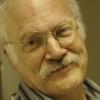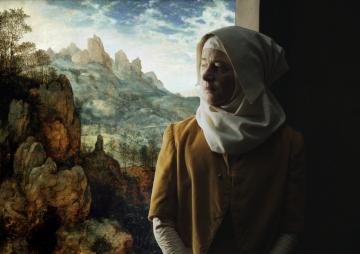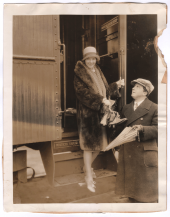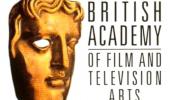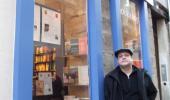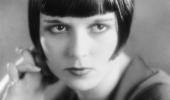'The Mill' explores Bruegel's Passion of Christ
Virtuoso Polish director Lech Majewski's "The Mill and the Cross" is a moving picture in three senses: It gives motion to a 16th-century oil painting. It translates the artist's unique storytelling technique from canvas to cinema. And the resultant narrative cannot fail to move its viewers viscerally.
Which is not to say it's easy viewing ... or reviewing. But it is perhaps the most extraordinary visual experience of this fiscal-filmic year.
The canvas we literally enter and inhabit here is "The Way to Calvary," by Pieter Bruegel (1525-69), the Flemish Renaissance master of landscapes and peasant genre scenes. His potent subject is Christ's Passion, set "locally" during the brutal Spanish occupation of the Low Countries. The Reformation was then flourishing in Flanders, and Catholic inquisitor forces pursued Protestants with a vengeance: Male heretics were executed by sword or torture; female heretics were buried alive.
Mr. Majewski's business is the construction, rather than deconstruction, of the painting, which is large but not huge (about 51/2 by 4 feet): In it, an enormous crowd is assembling for the crucifixion event, converging from all directions and walks of life -- some 500 figures in all! -- from a town in the background left toward a Golgotha in the background right, carrying their wares. Executions draw crowds, and crowds are good for vendors, after all.
In their midst, Christ and the two thieves are being herded to their deaths by soldiers in red tunics, bearing the two-headed eagle standard of the Habsburgs. The exact moment is Simon of Cyrene's forced enlistment to help staggering Jesus carry his cross (the crowd's attention is on Simon, not Christ). But our attention will be taken by Mr. Majewski, in backward and forward flashes, to more dramatic -- as well as banal -- moments of the Passion.
With virtually no dialogue at all for the first half-hour, and precious little after that, we get only modest insights from the artist (Rutger Hauer) in brief discussions of his concept with wealthy patron Nicolaes (Michael York). Very spare use is made of Mr. York (who also functions as quasi-Caiaphas/Pilate of the piece), or of Charlotte Rampling as Mary, the Stabat Mater in largely sorrowful silence.
But Bruegel is able to halt the painting and the action -- godlike -- when he wants to. He and Mr. Majewski sometimes freeze one part of the canvas while other parts of it move and breathe. The panorama is so vast, its topography so differentiated, the dual scenario so complex that we can only dip in and out of it selectively, section by section.
The actual painting is so minutely detailed that one needs a magnifying glass to fully apprehend it. It is dominated by an impossibly tall rock formation capped with an equally impossible mill -- no way to carry grain up or flour down such a place. The barely discernible miller stands outside it, where God would traditionally be, observing all -- the great miller/judge of all. Christ is at the painting's precise center, but you have to look hard to locate him.
"Why would you want to hide Jesus?" the artist is asked.
"Because he is most important," Bruegel replies.
Truth lies in what's hidden, which is why Mr. Majewski adds his behind-the-scenes scenes: How certain figures in the painting got there, and what happened to them before or after; selecting and felling the proper tree for an execution; the huge mill wheels' meshing wooden gears, a hint of the Last Supper and demise of Judas -- all the grist for his mill and cross alike. Bruegel was much influenced by Hieronymus Bosch's demonological paintings (so was Mr. Majewski, as his 2004 "Garden of Earthly Delights" attests). He was obsessed with children's games (cramming 50 of them into one painting) and a pioneer in the depiction of peasant life overflowing with vulgar, zesty grotesqueries. He created some of the first social-protest images and satires of religious conflict in Western art -- ordering his wife, on his deathbed, to burn the most subversive of them to spare his family from subsequent political persecution.
"The Mill and the Cross" sports countless stunningly beautiful images, thanks to Mr. Majewski's tour-de-force cinematography, although the layers of the visual tapestry also include gruesome shades of Mel Gibson's "The Passion of the Christ": What is it about crows pecking out eyeballs that Jesus-filmmakers can't resist?
Being wheelified -- the 16th-century Spanish equivalent of crucified -- is no less appalling. Most disturbing, perhaps, is that, aside from Mary and immediate kin, nobody in Bruegel's painting (and world) evinces much visible concern for the victims, human or divine. Bruegel's peasants are neither leering nor empathetic. Village life goes on, before, during and after the horror.
As art history goes, it doesn't get any better than this. (Interactive museumgoers can either mind or ignore the docent.) As a movie, it's problematic. Some detractors have said it's like watching paint dry. I think it's like watching paint be painted -- iconic and iconoclastic at the same time, a grimly fascinating and hypnotic meditation.
